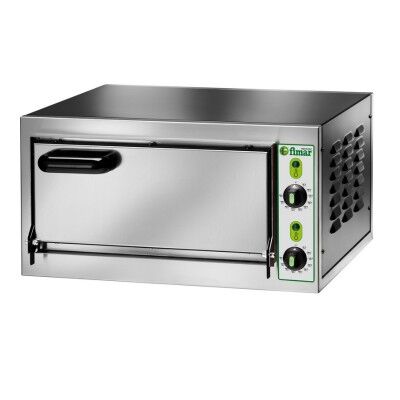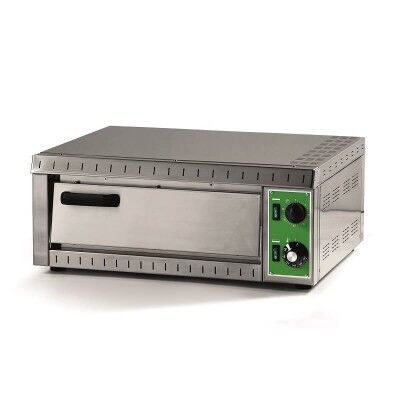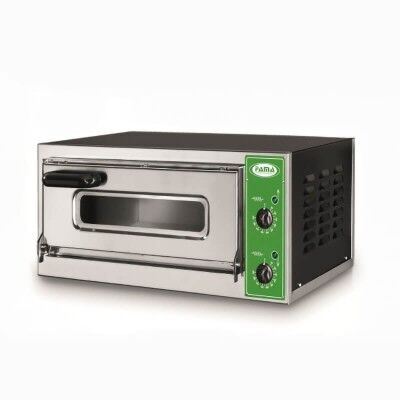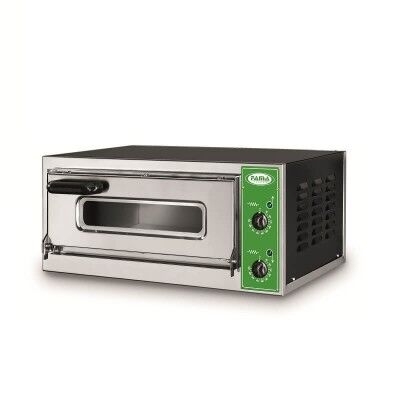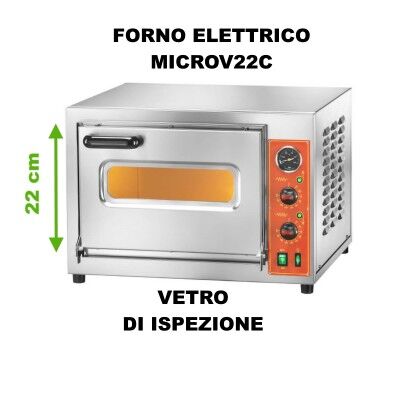Pizza Ovens
In this section, you can explore the wide range of pizza ovens available.
You can choose between two main operating categories:
A) Electric pizza ovens, available in single-phase or three-phase models, which allow you to achieve outstanding pizzas thanks to complete control over the cooking process.
B) Gas pizza ovens, simpler and more suitable for those with electrical power limitations.
Depending on the various models, you can select ovens with multiple features: alloy or steel construction, manual or digital thermostats for precise temperature control, refractory cooking surfaces, single or double cooking chambers, and much more. Each oven is the perfect solution for the diverse needs of pizzerias or restaurants, ranging from small countertop ovens to large pizza ovens designed for high-volume workloads. If you have any questions about choosing a pizza oven, give us a call — we’ll be happy to assist you.
Main Differences in Fimar Pizza Ovens:
- FMD: Fully refractory chamber – digital controls.
- FML - FME: Refractory cooking surface – equipped with pyrometers.
- FYL - FES: Refractory cooking surface – NO pyrometers.
How to Choose a Professional Pizza Oven: The Golden Rules to Select the Right Product for Your Needs
When purchasing a pizza oven for your business, whether it’s a pizzeria or a restaurant, the first thing to consider is the power source, which can be gas or electric. This initial choice already leads to significant differences in cooking performance and energy consumption.
Other factors to seriously consider include:
- The size and capacity of the cooking chamber.
- The type of oven control: mechanical or digital.
- The distribution of refractory stone within the chamber: only on the base or throughout?
- Ease of use and practicality.
Now, let’s examine the specific differences between a 500-degree electric pizza oven and a gas-powered one.
Gas Pizza Oven
The gas pizza oven offers lower operating costs in terms of energy consumption and can reach operating temperature very quickly. This feature allows the oven to regain temperature rapidly even after opening the door. On the downside, temperature management within the cooking chamber is less precise compared to an electric oven.
PROS: Gas ovens are also suitable for less experienced pizza makers.
CONS: When choosing a gas pizza oven, it is necessary to consider the requirement of connecting it to an exhaust hood or chimney to vent the fumes and vapors produced during combustion and cooking.
Electric Pizza Oven
An electric pizza oven is typically equipped with thermostats that can independently regulate the temperature of the top and bottom heating elements. More advanced versions are equipped with digital control panels, offering highly precise temperature settings and customizable programs tailored to the pizza maker’s cooking preferences.
PROS: Compared to gas ovens, electric pizza ovens offer easier installation.
CONS: Versions with digital control panels provide enhanced cooking functions but are more complex to set up, making them more suitable for experienced users.
FAQ - Frequently Asked Questions
Where is the refractory stone located inside the pizza oven?
It depends on the type of oven chosen. Many pizza ovens only have a refractory brick base, offering a more affordable purchase price. However, models with a fully refractory-lined cooking chamber are also available in the catalog.
Why choose an oven with a fully refractory-lined cooking chamber?
A fully refractory-lined chamber ensures superior cooking quality compared to simpler models. Additionally, it offers the advantage of reducing the oven’s electrical consumption, which, as is well known, can be very energy-intensive and significantly impact operating costs. On the downside, a fully stone-lined oven inevitably reduces the internal dimensions of the cooking chamber.





